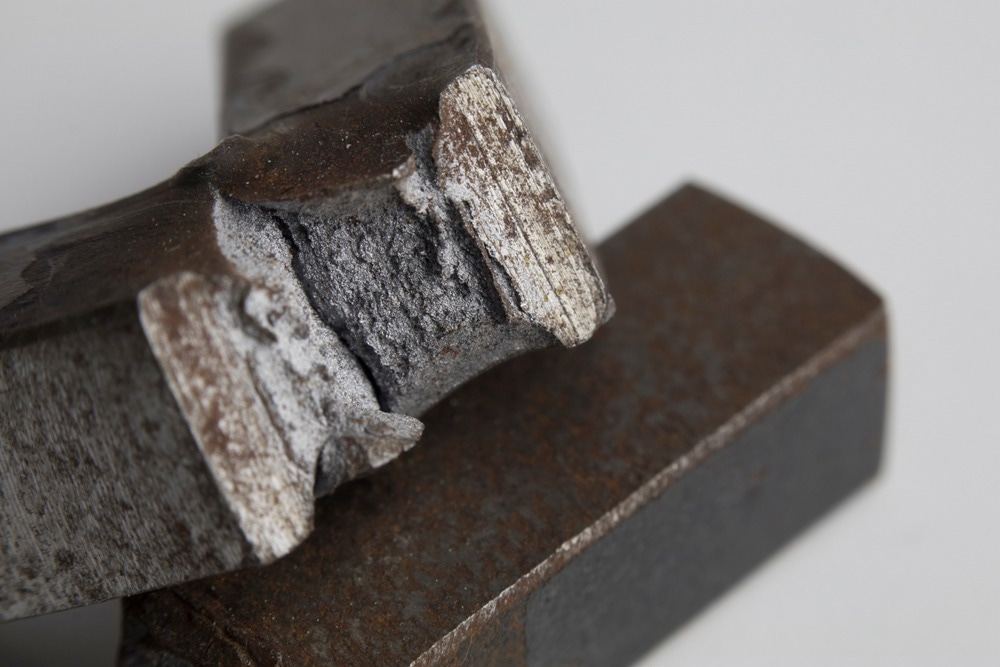Updated by Reginald Davey 22/09/23
Charpy testing is a method for determining the relative impact strength of metals. It is also known as the Charpy V notch test. This testing method was developed in the 1940s by S.B. Russell and G. Charpy.

Image Credit: bartu/Shutterstock.com
This is a standard method for testing the impact strength of a component containing a stress concentration. Several methods can be used to characterize a material’s toughness, but the Charpy and Izod tests are the most common. The Charpy test determines the amount of energy absorbed by the material during fracture.
The energy absorbed by the material gives a measure of its toughness and facilitates the study of the temperature-dependent ductile-brittle transition. This article will discuss the benefits of the method and how to Charpy test steel and other metallic products.
Charpy Test Method
The setup needed for Charpy testing consists of a rectangular beam of metal to be tested, notched in the center, and placed between two supports in the testing machine. Notches are usually V-shaped, but in special cases can be U-shaped. The notch is a predetermined breaking point, generating triaxial stress.
A swinging pendulum then breaks the metal beam, and the total energy absorbed by the metal is determined by comparing the height to which the pendulum rises after impact and the height from which it was dropped. This testing method is conducted under precisely defined conditions.
From this energy calculation, a metal's notch toughness can be found, which in turn enables the tester to study the ductile-brittle transition. Very brittle specimens break with next-to-no deformation, requiring low deformation energy. Meanwhile, with tougher material specimens, higher deformation energy is required.
The transition from brittle to ductile behavior occurs over a certain temperature range, which is different for different metals. The Charpy impact test can adequately detect this brittle-toughness transition temperature, providing key data on the material’s limits of use.
It must be noted, however, that the Charpy test is less useful for comparing the toughness of different metals but is more suited to providing information on the behavior of a single material at different temperatures.
Charpy Test Benefits
Benefits of the Charpy test include:
- Cost-effective test method for composites
- Relatively easy to perform
- Helps to assess quality of a product
- Useful for evaluating new products
- Provides fast measurement results.
Industrial Applications
Industrial products must be able to withstand different environments, climactic conditions, stress and load conditions, and wear over their lifetime. Therefore, it is vital that metallic products be tested thoroughly before being used.
Some of the primary application areas of the Charpy test include:
- Materials testing
- Construction of pressure vessels
- Determining the impact strength of structures such as bridges and skyscrapers.
Materials such as ferritic steels, which have a bcc structure, and materials with a hex structure become brittle at low temperatures. Their toughness is highly dependent on temperature. The Charpy impact test is highly useful for determining the operational parameters of these materials.
The Charpy test can also be used to evaluate structural conditions and heat treatments of materials such as ferritic steels. Furthermore, this test can be used to determine the impact of aging in structural materials.
Therefore, the Charpy test is useful for determining and verifying:
- Heat treatments
- Aging effects
- Material transition temperatures (possible embrittlement onset.)
This testing method can also be used to verify the pendulum impact tester’s energy capacity itself.
In Summary
It is important to Charpy test steel and other metallic products to determine their toughness and other critical material factors, such as the effect of heat treatments and aging. However, notch impact energy cannot be used to assess material fracture energy alone. Other parameters must be evaluated to produce a complete picture.
More from AZoM: Comparison of Mechanical Properties of Gray and Ductile Iron Castings at Room Temperature
Further Reading and More Information
Tec-Science (2018) Charpy impact test [online] tec-science.com. Available at:
https://www.tec-science.com/material-science/material-testing/charpy-impact-test/